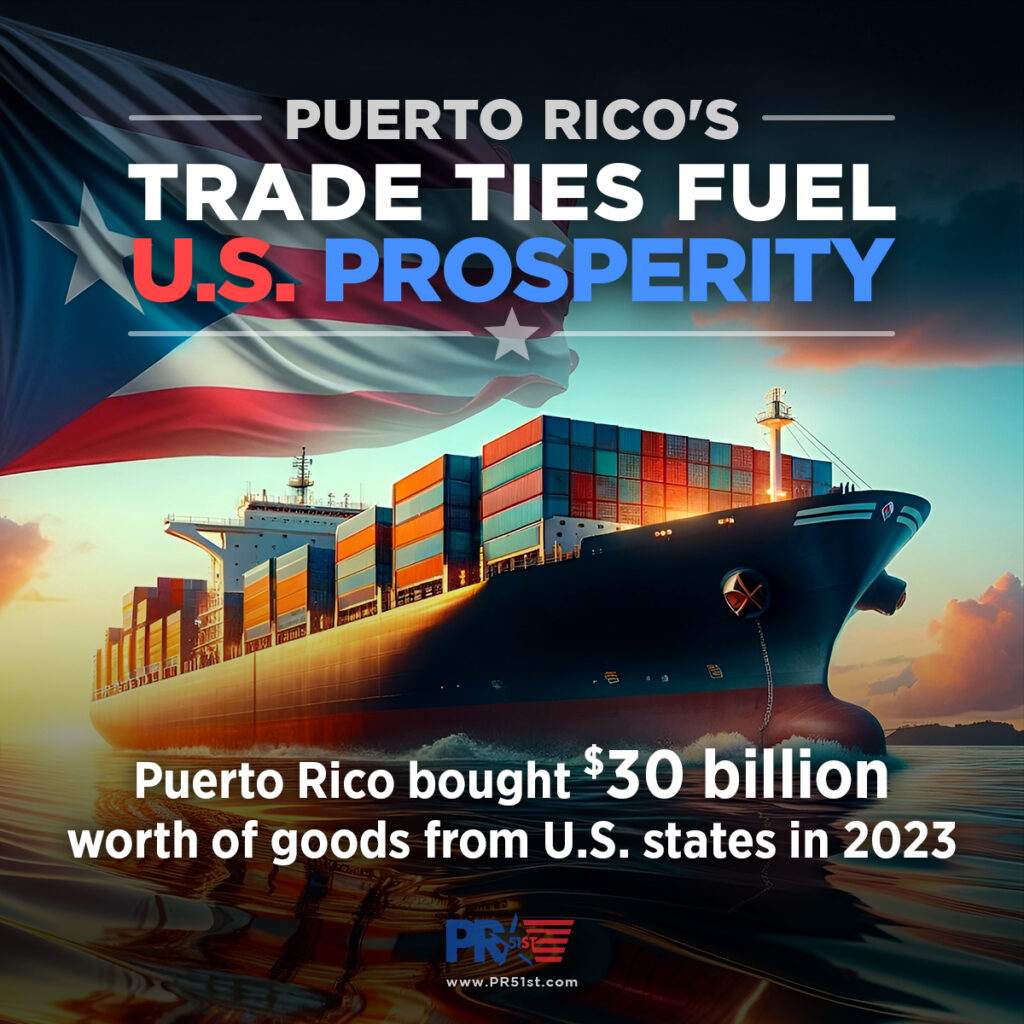32 territories have already become states, and none of them were as thoroughly integrated into the U.S. economy when they joined the Union as Puerto Rico is today.
58% of all Puerto Rico’s trade is with the United States. Puerto Rico also imports goods from other nations — 67% of the ships bringing cargo to Puerto Rico are foreign-flag ships, that is, from other countries besides the United States. Puerto Rico also exports goods to other countries. In fact, among the 53 American entities with recorded exports, Puerto Rico was #25 in 2022 and #27 in 2023. But most exports and imports are between the states and Puerto Rico.
Are “exports” and “imports” the right words to use? Officially, goods shipped between the states and Puerto Rico are interstate commerce, not exports. Since Puerto Rico is a territory of the United States and not a foreign country, these transactions don’t require tariffs or duties. However, Electronic Export Filings are required for Puerto Rico. As the Senate Finance Committee explains, “The requirement of EEI filings contradict the fact that Puerto Rico is a part of the United States, adding to the confusion regarding Puerto Rico’s political status.”
Since the Census Bureau uses the terms “export” and “import” in reference to shipments between the states and Puerto Rico, we are doing the same. It makes the economic relationship easier to describe and clearer to see.
U.S. exports to Puerto Rico
For U.S. companies, Puerto Rico is an important customer. Data from the U.S. Census Bureau shows that Puerto Rico imported roughly $30 billion worth of goods from the United States during 2022. The specific items ranged from horses to herbal tea, bauxite to blinds, and drums to dresses.
Most food consumed in Puerto Rico is brought in from the states. Most fuel is also brought from the states — Puerto Rico consumes 70 times as much energy as it produces. These facts are disadvantages for Puerto Rico which local entrepreneurs are working to overcome, but for the present they make Puerto Rico a very significant market for goods from the states.
Puerto Rico exports to the U.S.
77% of Puerto Rico’s exports head for the United States. 13% reach Europe and 3% go to Asia. The primary categories of exports for Puerto Rico are pharmaceuticals, at about $38 billion per year, and medical devices, at $2.5 billion per year. The United States is the main market for the goods.
Chemicals, electronics, precision implements, and machinery are the next tier of exports from Puerto Rico. While some of these items go to the Dominican Republic and Mexico, the United States is still a major trading partner for these industries.
Even though Puerto Rico imports 85% of the food eaten there, the Island also exports some food. Again, the United States is one of the destinations for these exports.
Puerto Rico/U.S. exports
Puerto Rico continues to be the top exporter of pharmaceuticals and medical supplies for the United States. This does not include only the goods going from the Island to the United States, but also the goods heading from U.S. companies in general to the world in general. Puerto Rico’s pharmaceutical and medicine manufacturing industries produced 19.3% of all the U.S. exports in those categories in the year 2020 — more than any state. Along with medical equipment and supplies and basic chemicals, these goods account for 88.5% of all the exports from Puerto Rico.
Puerto Rico’s people and businesses help to create jobs and profits for a wide array of businesses across the U.S. Strengthening Puerto Rico’s economy through statehood would only increase the amount of interstate commerce the island engages in with the other states. Tell your representatives that you support statehood for Puerto Rico.









No responses yet